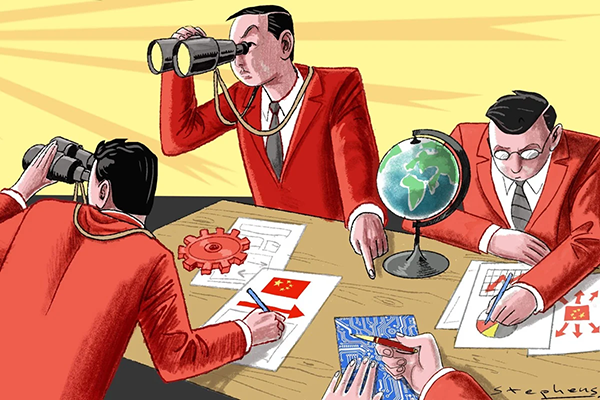Andy Mok: Huawei has survived the crucible. What’s next?
April 01 , 2022
By Andy Mok, a research fellow at the Center for China and Globalization(CCG).
Dark desires and hidden agendas are the subject of Arthur Miller’s play, The Crucible, which tells the story of the Salem witch trials and how a self-perpetuating cycle of paranoia and opportunism can destroy the lives of innocents and undermine an entire community. The title of the play is illuminating because a crucible is a container in which metals are subjected to extremely high temperatures that burn away impurities and result in the creation of something more refined. As such, it also describes severe trials that test one’s character and reveal one’s inner essence and true nature. And the metaphor of a crucible can be a good way to consider Huawei’s recent performance.
As the target of suspicion and paranoia instigated perhaps by dark desires and hidden agendas, Huawei, like those accused in the Salem witch trials (and during the McCarthy anti-communism hysteria on which Miller’s play serves as an acid commentary), has undergone a severe test the last few years. The company’s recently released business results for 2021 provide insight into how well it has weathered these trials.
From a financial perspective, Meng Wanzhou, chief financial officer, reported that Huawei’s net profit increased 76% to $17.8 billion. While a big contributor to this was the sale of Honor, a leading global provider of smart devices, and its server business, the company’s operation businesses also increased their net profit margins. Cash flow from operating activities also increased 69.4%. These two measures show the company’s ability to continue as a viable commercial enterprise.
But what the crucible of unwarranted attacks against Huawei revealed is its essence as a technology company dedicated to breakthroughs in innovation. According to Guo Ping, Huawei’s rotating chairman, the company’s commitment to R&D and innovation is unshakable. And as Meng Wenzhou emphasized, “The real value of a company, especially a tech company like Huawei, is not only reflected in its financial performance, but also in its future-oriented, long-term investments. The real value of Huawei in particular lies in the capabilities, teams, and platforms we have built with our long-term R&D investment. They are the real key to Huawei’s long-term and sustained competitiveness.”
While it may be easy to talk the talk, walking the walk is another matter. For many companies facing challenging environments it would be easy to reduce spending in this area. But for Huawei, in 2021 R&D investment accounted for 22.4% of total revenue or $22.6 billion, which was the highest in the past ten years. In terms of staffing, Huawei had about 107,000 R&D employees, representing approximately 55% of all employees.
Moreover, its R&D efforts are not only focused on product and commercialization opportunities. Instead, like Bell Labs, which decades ago laid the foundation for much of the technological infrastructure on which the world today depends, Huawei is investing in basic scientific theory, computing architecture and software. And in addition to its own efforts, the company has continued to expand partnerships with universities, research institutes and individual academics around the world to overcome technological bottlenecks facing the entire ICT ecosystem.
Perhaps most significantly, being denied access to advanced process techniques, Huawei is focusing on innovations in systems engineering to create new areas for performance breakthroughs. In the design world, it is stated that severe constraints often are the catalyst for stoking creativity and sparking new insights and paradigms. Given the understanding that humans can be seen as an essential part of a physical systems and the need to manage growing levels of complexity, this is an area that offers exciting new possibilities for leadership and advances that can benefit more than just the ICT industry.
Access to semiconductors is another crucial challenge facing Huawei and many other companies around the world. But Guo Ping believes there is cause for optimism: “It really takes patience to address this chip issue, because the engineering processes needed to turn sand into chips are so complicated and time-consuming. In a globalized environment, redeveloping these technologies multiple times shouldn’t have been able to generate commercial value. However, the current market landscape and technology restrictions are driving new demand. So investment in this area will now create commercial value. We believe there will be many new entrants to this market. We will be happy to see them succeed.”
And so, while Huawei still faces an enormously challenging environment and uncertainty due to the COVID-19 pandemic, the Ukrainian conflict and other geopolitical issues that also affect many other businesses around the world, it has confronted a unique test the last few years. The crucible of unwarranted attacks like those of the Salem witch trials and McCarthy era anti-communism has forced the company to make painful changes and adjustments. But it has also revealed the true nature and essence of the company. In addition, the attacks have caused the company to focus on new areas of R&D such as systems engineering that may lead to breakthroughs which benefit not only Huawei and the ICT industry but a world that urgently needs better approaches for managing increasingly complex circumstances.
Topical News See more






